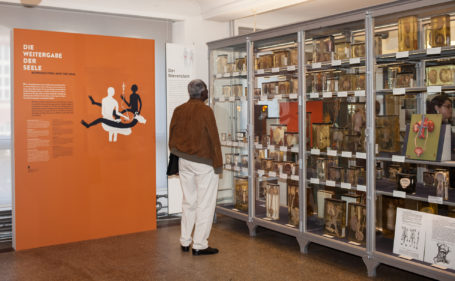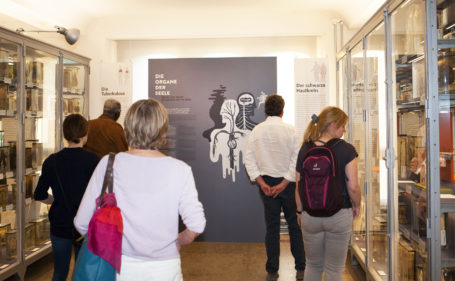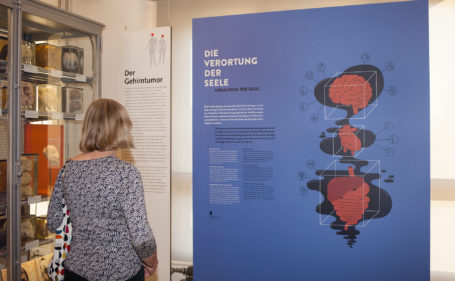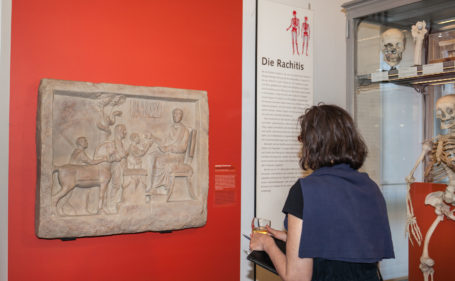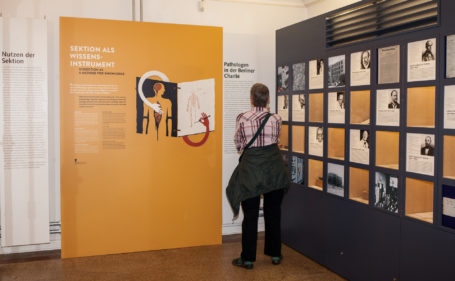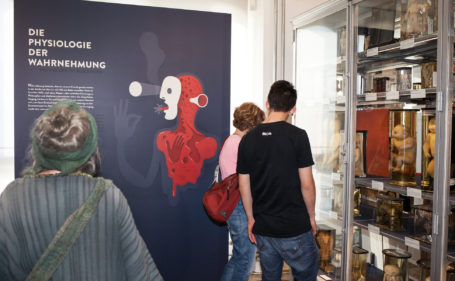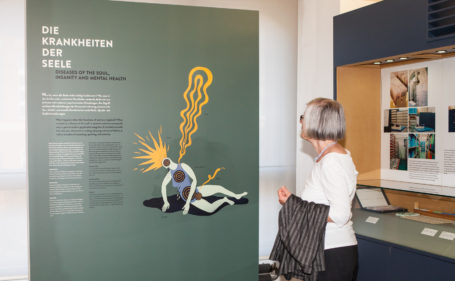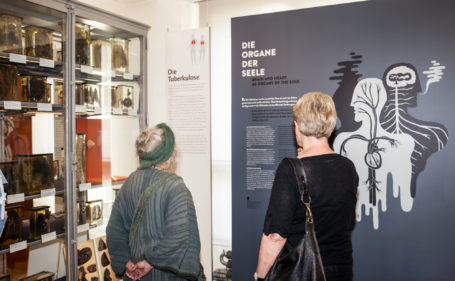The Soul is an Octopus
Ancient Ideas of Life and the body
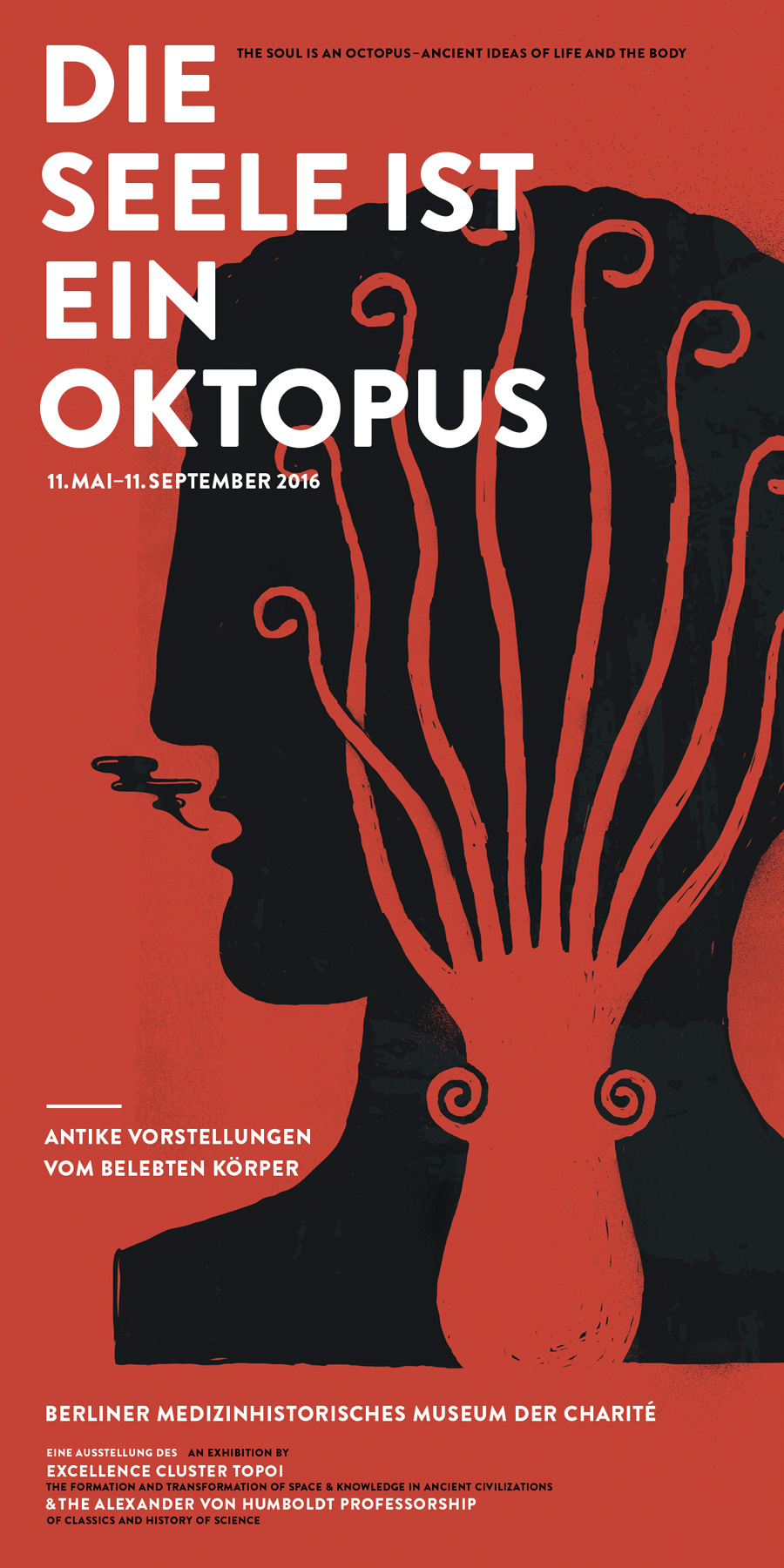 The exhibition “The Soul is an Octopus” examined ancient conceptions of the soul and its interaction with the human body. In Graeco-Roman thought the soul was not only the basis of an individual person’s thinking, feeling or moral character. It was also a biological principle that gave life and structure to the body. The soul enabled the material body to function so that human beings could move or think. The body in return was thought of as carrying out the functions of the soul as its organon–the Greek word for instrument. From the ways in which the soul’s instruments functioned or failed to function, as in cases of illness, ancient philosophers and medical thinkers tried to infer the nature of the soul itself. Thus pathologies of body and mind indicated where and how the functions of the soul were being disrupted, and played a valuable part in understanding the nature and the operations of the soul.
The exhibition “The Soul is an Octopus” examined ancient conceptions of the soul and its interaction with the human body. In Graeco-Roman thought the soul was not only the basis of an individual person’s thinking, feeling or moral character. It was also a biological principle that gave life and structure to the body. The soul enabled the material body to function so that human beings could move or think. The body in return was thought of as carrying out the functions of the soul as its organon–the Greek word for instrument. From the ways in which the soul’s instruments functioned or failed to function, as in cases of illness, ancient philosophers and medical thinkers tried to infer the nature of the soul itself. Thus pathologies of body and mind indicated where and how the functions of the soul were being disrupted, and played a valuable part in understanding the nature and the operations of the soul.
With this exhibition, members of the Topoi research group (D-2) Mapping Body and Soul and of the Alexander von Humboldt research programme “Medicine of the Mind, Philosophy of the Body: Discourses of Health and Well-Being in the Ancient World” presented their ongoing research on ancient conceptions of the interaction between body and soul and attempts at localization of the soul within the human body. They do so by ‘intervening’ in the permanent exhibition of the Berlin Medical History Museum. The site for this “intervention” is the central room housing the 19th century physician and pathologist Rudolf Virchow’s specimen collection, which was envisaged as a spatialized “map” of the human body.
The exhibition introduced three important questions that were central to classical philosophers and physicians alike:
- What is the ruling part of the soul?
- Where does it reside?
- How does it communicate with the body?
Nine “intervention areas” presented the latest results of research on texts by Hippocrates, Plato, Aristotle, Galen and other ancient authors. By means of historical objects, selected original text samples and vivid graphics, the exhibition shows what it meant to be “ensouled” in ancient times.
Stations
Berliner Medizinhistorisches Museum der Charité | May 11, 2016 to September 11, 2016 | Exhibition opening: May 10, 2016
Deutsches Medizinhistorisches Museum Ingolstadt | July 20, 2017 to January 21, 2018
Klinikum Christophsbad in Göppingen | February 15 to July 15, 2018
Research Projects
Publication
Uta Kornmeier (Hg.): The Soul is an Octopus. Ancient Ideas of Life and the Body, Berlin, Berliner Medizinhistorisches Museum 2016, ISBN 978-3-9817965-0-6, 136 S., 9 €.
Photo credits: ©Topoi
Press Review
- rbb inforadio, 16.5.2016, 9.45 AM
- Medizinhistorisches Museum der Charité in Berlin zeigt Ausstellung …
Berliner Zeitung, 13.05.2016 - Wie ein achtarmiger Oktopus, Deutschlandfunk, 12.05.2016
- Die Seele ist ein Oktopus, rbb Kulturradio, 13.05.2016
- Die Seele ist ein Oktopus, Press release 10.5.2016
- Die Seele ist ein Oktopus – Ausstellung im Berliner Medizinhistorischen Museum, Press invitation 27.4.2016

